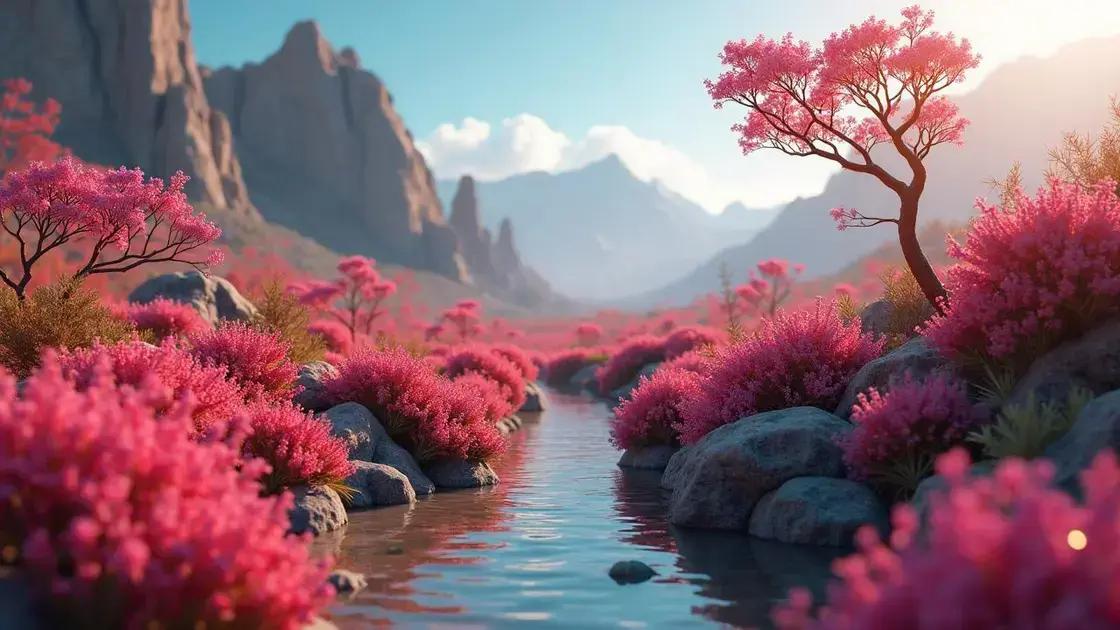How to Take Care of a Kalanchoe Plant: 7 Essential Tips for Success
How to take care of a kalanchoe plant is a question many budding gardeners ask. Perfect for beginners and seasoned experts alike, the kalanchoe’s vibrant blooms and hardy nature make it a fantastic choice for indoor gardening. Curious about how to keep these beauties thriving? Here are some essential care tips that will help you cultivate a flourishing kalanchoe.
Table of Contents
ToggleEssential watering techniques for kalanchoe
Essential watering techniques for kalanchoe are crucial for maintaining healthy growth and vibrant blooms. Understanding the watering needs of your kalanchoe plant will help you avoid common pitfalls and keep your plant thriving.
Understanding kalanchoe watering needs
- Kalanchoe plants prefer dry soil conditions and can suffer from overwatering.
- Water when the top inch of the soil is dry to the touch.
- Generally, watering every 2-3 weeks is sufficient, depending on the environment.
Steps for proper watering
- Check the soil moisture with your finger before watering.
- If the soil feels dry, thoroughly water the plant until water drains from the bottom of the pot.
- Empty the saucer under the pot to prevent water accumulation.
- Avoid watering directly onto the leaves to prevent rotting.
Best practices for kalanchoe watering
To ensure your kalanchoe receives the right amount of hydration, consider the following tips:
- Use a pot with drainage holes to allow excess water to escape.
- Avoid letting the plant sit in water; it should not be soggy.
- Adjust your watering schedule based on seasonal changes; less water is needed in the winter months.
Common mistakes to avoid
- Watering on a fixed schedule without checking the soil moisture.
- Overwatering during the winter when kalanchoe requires less moisture.
By implementing these essential watering techniques for kalanchoe, you’ll ensure that your plant remains healthy, vibrant, and ready to bloom. Remember, exploring indoor gardening techniques can further enhance your understanding and care of these beautiful plants.
Understanding kalanchoe sunlight requirements

Understanding kalanchoe sunlight requirements is vital for keeping your plant healthy. These vibrant plants thrive best when provided with enough light, striking a balance between sun exposure and shade.
Optimal light conditions for kalanchoe
- Kalanchoe plants flourish with bright, indirect sunlight.
- Direct sunlight for a few hours daily can aid in blooming.
- A south or east-facing window is often ideal for optimal light exposure.
Signs of inadequate sunlight
- Leggy growth with long stems indicates insufficient light.
- Leaves turning yellow may signal the need for brighter conditions.
- Reduced blooming or flower buds falling off can point to low light levels.
Adjusting light exposure
To ensure your kalanchoe receives the right amount of sunlight, follow these steps:
- Monitor your plant’s growth and leaf coloration regularly.
- Gradually introduce the plant to brighter light if growth appears leggy.
- Move the plant to a more suitable window if it shows signs of stress.
Best planting practices for light
When potting your kalanchoe, consider the following:
- Use coarse, well-draining soil to avoid waterlogged roots.
- Ensure the pot has drainage holes for excess moisture.
- Rotate the pot weekly to promote even growth and light exposure.
Properly addressing kalanchoe sunlight requirements will help keep your plant healthy and blooming. For further tips and techniques, consider exploring indoor gardening techniques for optimal plant care.
Best soil and fertilization practices for kalanchoe
Best soil and fertilization practices for kalanchoe are essential for promoting healthy growth and vibrant blooms. Choosing the right soil and implementing effective fertilization strategies can help your kalanchoe thrive.
Ideal soil types for kalanchoe
- Use a well-draining potting mix tailored for succulents or cacti.
- A mixture of regular potting soil with sand or perlite can improve drainage.
- Avoid heavy soils that retain moisture, as kalanchoe is prone to root rot.
Components of an effective potting mix
When creating your own soil blend, consider incorporating:
- 1 part potting soil
- 1 part perlite
- 1 part coarse sand
Fertilization techniques for kalanchoe
To keep your kalanchoe healthy, follow these fertilization tips:
- Use a balanced, water-soluble fertilizer during the growing season (spring and summer).
- Dilute the fertilizer to half the recommended strength to avoid over-fertilization.
- Apply fertilizer every 4-6 weeks to provide the necessary nutrients.
Signs of over-fertilization
- Yellowing leaves can indicate nutrient burn.
- Stunted growth may suggest excessive fertilizer usage.
- Look for crusty buildup on the soil surface as a sign of salts accumulating.
In summary, understanding the best soil and fertilization practices for kalanchoe will greatly enhance your plant’s health and beauty. For more techniques, consider exploring indoor gardening techniques to elevate your planting skills.
In conclusion
Caring for a kalanchoe plant effectively requires understanding its specific needs in terms of watering, sunlight, soil, and fertilization. By mastering these essential tips, you’ll promote a healthier, more vibrant plant that can bring life to your indoor spaces. Additionally, for further insights and options to boost your gardening skills, explore tips on enhancing your indoor garden for a thriving green environment.

